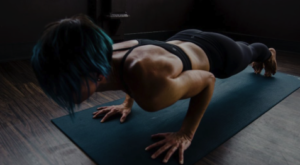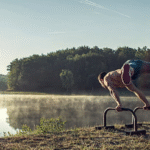Overcoming Plateaus in Calisthenics: Break Through Barriers
Plateaus are a common frustration in calisthenics, but they’re not insurmountable. When your progress stalls, it simply means your body has adapted to your current training routine. To break through these barriers and continue progressing, you need to introduce new challenges and stimuli. Here’s a detailed guide to overcoming plateaus in calisthenics:
- Identify the Plateau
Track Your Progress: Keep a detailed record of your workouts, including exercises, sets, reps, and rest times. This helps you identify when your progress has stalled.
Assess Your Performance: Are you struggling to add more reps, increase sets, or progress to harder variations? Are you feeling fatigued or experiencing decreased motivation? These are signs of a plateau.
- Analyze Your Training Routine
Reassess Your Goals: Are your current goals still relevant and motivating? If not, set new goals that challenge and excite you.
Evaluate Your Program: Is your training program still effective? Are you varying your exercises, sets, reps, and rest times? If not, it’s time for a change.
- Strategies to Overcome Plateaus
Progressive Overload:
Increase Intensity: Challenge your muscles by adding weight (weighted vest, resistance bands), increasing resistance (using harder variations), or decreasing rest time between sets.
Increase Volume: Gradually increase the number of sets and reps you perform for each exercise.
Vary Your Exercises: Incorporate new exercises or variations to challenge your muscles in different ways.
Address Weaknesses:
Identify Weak Points: Determine which exercises or muscle groups you struggle with the most.
Targeted Training: Focus on strengthening those weak points with specific exercises and progressions.
Periodization:
Vary Training Phases: Divide your training into different phases, focusing on hypertrophy (muscle growth), strength, endurance, or skill development. This prevents adaptation and promotes continuous progress.
Deloading: Incorporate deload weeks into your training schedule to allow your body to recover and adapt. During deload weeks, reduce your training volume and intensity.
Optimize Recovery:
Prioritize Sleep: Aim for 7-9 hours of quality sleep per night to allow your body to repair and rebuild.
Nutrition: Fuel your body with a balanced diet that supports muscle growth and recovery.
Active Recovery: Incorporate active recovery days into your routine, including light activities like walking, stretching, or foam rolling.
Mind-Muscle Connection:
Focus on the Muscle: Improve your mind-muscle connection by consciously focusing on the muscles you’re working during each exercise. This can enhance muscle activation and lead to better results.
Technique Refinement:
Analyze Your Form: Review your technique and identify any areas for improvement. Even small adjustments can make a big difference in your performance.
Seek Feedback: Ask a coach or experienced calisthenics practitioner to assess your form and provide feedback.
Try New Training Methods:
Explore Different Techniques: Experiment with different training methods like supersets, drop sets, or isometric holds to challenge your body in new ways.
Stay Consistent and Patient:
Consistency is Key: Stick to your training plan and don’t get discouraged by temporary setbacks.
Be Patient: Progress takes time and effort. Celebrate your small victories and keep pushing towards your goals.
Breaking Through Mental Barriers
Challenge Your Mindset: Plateaus can also be mental. Believe in your ability to overcome challenges and continue progressing.
Set Realistic Goals: Set achievable goals that motivate you and keep you focused.
Stay Positive: Maintain a positive attitude and focus on the progress you’ve already made.
Find a Training Partner: Training with a partner can provide motivation, support, and accountability.
Overcoming plateaus is a natural part of the calisthenics journey. By understanding the causes of plateaus and implementing these strategies, you can break through barriers, continue progressing, and achieve your fitness goals. Remember to listen to your body, stay consistent, and enjoy the process of overcoming challenges and becoming stronger.

Overcoming Plateaus in Calisthenics: Break Through Barriers
Route
Calisthenics Gym Houston Functional Bodyweight Training
Secondary phone: (346) 483-3195
Email: info@calisthenicsclubhouston.com
URL: https://calisthenicsclubhouston.com/
Monday 6:00 AM - 7:00 PM Tuesday 6:00 AM - 7:00 PM Wednesday 6:00 AM - 7:00 PM Thursday 6:00 AM - 7:00 PM Friday 12:00 PM - 6:30 PM Saturday 9:45 AM - 12:00 PM Sunday 3:00 PM - 5:00 PM





